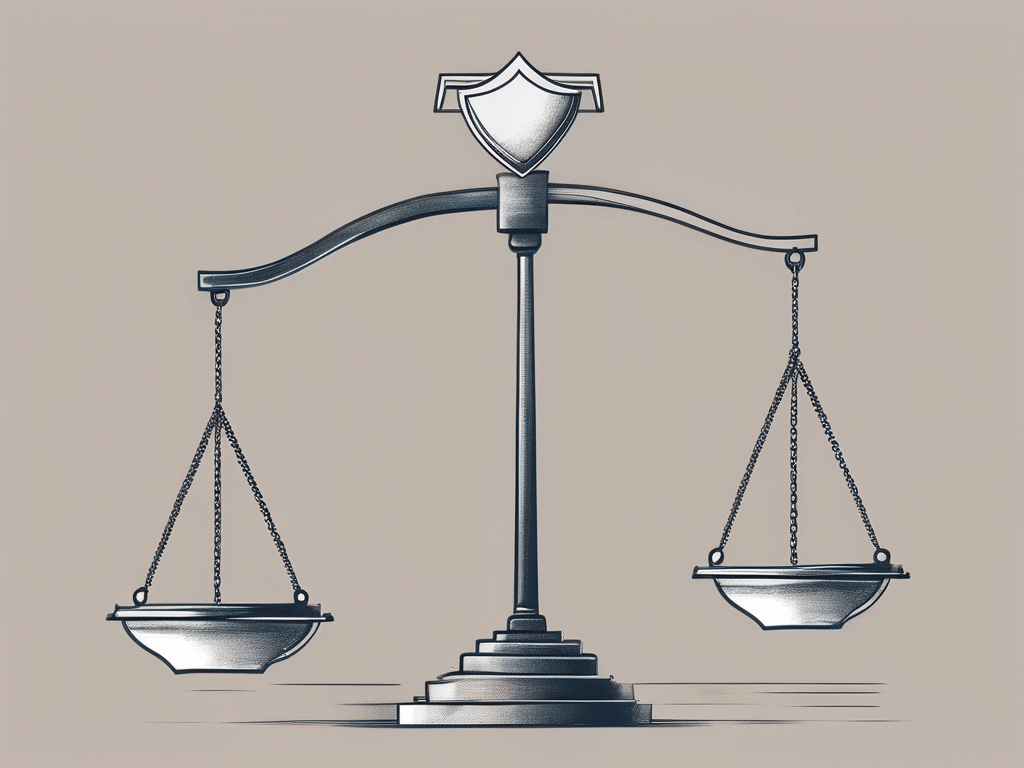In today’s competitive business landscape, protecting your brand is crucial to maintaining a competitive edge. One essential step in safeguarding your brand identity is through trademark registration. This article will guide you through the process of legally protecting your brand by understanding the importance of trademark registration, the different types of trademarks, and the steps involved in the registration process. We will also discuss post-registration considerations and common mistakes to avoid.
Understanding the Importance of Trademark Registration
Trademarks play a vital role in establishing brand identity and distinguishing your products or services from competitors. By registering your trademark, you gain exclusive rights to use and protect it. Let’s delve deeper into the significance of trademarks in brand protection.

Trademark registration not only grants you exclusive rights to use the mark but also provides nationwide protection, giving you the ability to expand your business without fear of infringement. It acts as a powerful deterrent to potential infringers, as it puts them on notice of your legal rights and can help avoid costly legal disputes in the future.
Defining Trademark and Its Significance
A trademark is a recognizable symbol, logo, phrase, or design that identifies and represents your goods or services. It sets your brand apart from others, allowing consumers to associate distinct qualities with your products or business. Registering your trademark is essential as it provides you with legal protection against any unauthorized use or infringement.
Furthermore, a registered trademark can add significant value to your business by creating a valuable intangible asset. It can enhance your brand’s reputation, attract investors, and increase consumer trust and loyalty. In today’s competitive market, where brand recognition is crucial, a strong trademark can be a cornerstone of your marketing strategy.
The Role of Trademark in Brand Protection
Trademarks serve as a key tool in brand protection by preventing others from using identical or similar marks that may confuse consumers. Through trademark registration, you can safeguard your brand’s reputation and prevent unauthorized individuals or companies from capitalizing on your success. By taking prompt action against any infringement, you can maintain control over your brand and ensure its integrity.
Moreover, a registered trademark can open up new opportunities for licensing and franchising, allowing you to generate additional revenue streams and expand your brand’s reach. It also provides a solid foundation for international expansion, as it can be used to secure trademark rights in foreign markets, protecting your brand on a global scale.
The Basics of Trademark Registration
Trademark registration involves a detailed process that varies depending on your jurisdiction. Before initiating the registration, it is crucial to understand the eligibility criteria and the different types of trademarks recognized by law.
When delving into the world of trademark registration, it’s essential to recognize that the process is not just a simple administrative task but a strategic move to protect your brand identity. By registering a trademark, you gain exclusive rights to use that mark in connection with your goods or services, preventing others from capitalizing on your hard-earned reputation.
Eligibility Criteria for Trademark Registration
To be eligible for trademark registration, your mark should be distinctive, meaning it distinguishes your goods or services from others. It should not be generic, descriptive, or deceptive. Additionally, your mark should not conflict with existing registered trademarks or violate any moral or public order.
Distinctiveness is a key factor in trademark registration as it ensures that consumers can easily identify the source of the products or services associated with the mark. A strong and distinctive mark not only facilitates brand recognition but also helps in building customer loyalty and trust over time.
The Different Types of Trademarks
Trademarks can take various forms, including word marks, design marks, combination marks, and even sound or scent marks. When considering trademark registration, consult with a legal professional to determine the most suitable type for your brand.
Each type of trademark has its unique advantages and considerations. For example, a word mark may provide broad protection for the specific words or phrases used, while a design mark can offer protection for the visual elements of your brand, such as logos or graphics. Understanding the nuances of each type can help you make an informed decision that aligns with your brand’s identity and long-term goals.
The Trademark Registration Process
Trademark registration is a crucial step in protecting your brand identity and intellectual property. Once you understand the basics of trademark registration, you can proceed with the application process. Here, we will outline the essential steps involved to help you navigate this important legal procedure.

One of the initial steps in the trademark registration process is preparing for the trademark application. Before submitting your application, it is vital to conduct a comprehensive trademark search to ensure no similar marks exist in the same class of goods or services. This search helps minimize the risk of potential conflicts and increases the probability of a successful registration. Additionally, seeking the guidance of a trademark attorney during this phase can provide valuable insights and ensure a more thorough search.
Preparing for Trademark Application
Before submitting your application, conduct a comprehensive trademark search to ensure no similar marks exist. This search helps minimize the risk of potential conflicts and increases the probability of a successful registration.
After completing the necessary research, you can proceed with the trademark application. This involves submitting the required forms, providing a proper description of goods or services, and paying the applicable fees. The registration process may vary in duration, but it is essential to carefully follow all instructions and respond promptly to any requests or objections from the trademark office. Remember, attention to detail and thoroughness in your application can significantly impact the outcome of the registration process.
Post-Registration Considerations
Once your trademark is successfully registered, certain responsibilities and considerations need to be upheld to maintain its validity and protect your brand.
After the excitement of successfully registering your trademark settles, it’s important to remember that this is just the beginning of your journey as a trademark owner. Your responsibilities extend beyond the registration process, requiring ongoing attention and action to ensure the continued protection and strength of your brand.
Maintaining and Renewing Your Trademark
Trademark registration is not a one-time process. To keep your mark active and enforceable, you must file periodic renewal applications and pay the requisite fees. Failure to do so may result in the cancellation or expiration of your trademark.
Renewal requirements vary by jurisdiction, so it’s crucial to stay informed about the specific deadlines and procedures relevant to your trademark. Missing a renewal deadline can have serious consequences, potentially leaving your brand vulnerable to infringement or even loss of rights. Establishing a system to track renewal dates and setting reminders can help you stay on top of this important aspect of trademark ownership.
Dealing with Trademark Infringement
While trademark registration provides legal protection, you must remain vigilant in enforcing your rights. Promptly addressing any suspected trademark infringement is essential to safeguarding your brand’s reputation and maintaining control over your intellectual property. Consult with a legal professional if you believe your trademark rights have been violated.
In cases of suspected infringement, it’s important to gather evidence to support your claim and assess the potential impact on your brand. Taking swift and appropriate action can help prevent further damage and signal to others that you are serious about protecting your trademark. Remember, proactive monitoring and enforcement are key components of a successful trademark protection strategy.
Common Mistakes to Avoid in Trademark Registration
To ensure a smooth trademark registration process, it’s important to avoid common pitfalls that may hinder your efforts. Let’s explore two significant mistakes many brand owners make.

Selecting a Strong Trademark
Choosing a strong trademark is crucial in protecting your brand identity. A strong mark is distinctive, unique, and not easily generic or descriptive. Avoid commonly used terms or phrases that may dilute your brand’s distinctiveness.
Consider conducting a trademark clearance search to evaluate the strength of your chosen mark. This search will help identify any existing trademarks that may be similar to yours, potentially saving you time and resources in the long run. Remember, a strong trademark not only sets your brand apart but also enhances its legal protection.
Overlooking Comprehensive Trademark Search
A comprehensive trademark search is vital to avoid potential conflicts and objections during the registration process. Failing to conduct a thorough search can lead to wasted time and resources on an application that may ultimately be rejected or opposed by existing trademark holders.
Furthermore, it’s essential to consider international trademark databases when conducting your search, especially if you plan to expand your brand globally. This proactive approach can help prevent future legal disputes and ensure a smoother registration process across different jurisdictions.
In conclusion, trademark registration is an indispensable step in legally protecting your brand. By understanding the importance of trademarks, navigating the registration process, and adhering to post-registration considerations, you can safeguard your brand identity and maintain a competitive advantage in the marketplace


